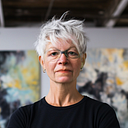Member-only story
Art and The Portuguese Renaissance in Europe
Arte do Renascimento Português.
“Oh, salty sea, how much of your salt Is tears from Portugal?” -Fernando Pessoa.
The Portuguese Renaissance was a period of cultural development in Portugal, during the 15th and 16th centuries. It is considered by many to be a part of the Renaissance, which is a broader movement that occurred throughout Europe.
At the end of the 15th century and the first half of the 16th century, fueled by expansion and financed by patrons such as the kings D. Manuel I and D. João III, Portuguese painting was in a golden age.
Casamento de Santa Úrsula com o Príncipe Conan.
Merchants, students, humanists, diplomats, scholars, and artists, from all over Europe, were drawn to Portugal during its Renaissance.
The maritime trade of the Age of Discovery were a decisive role in the evolution of the Portuguese Renaissance.
